Metals traders are bracing for the next big supply squeeze
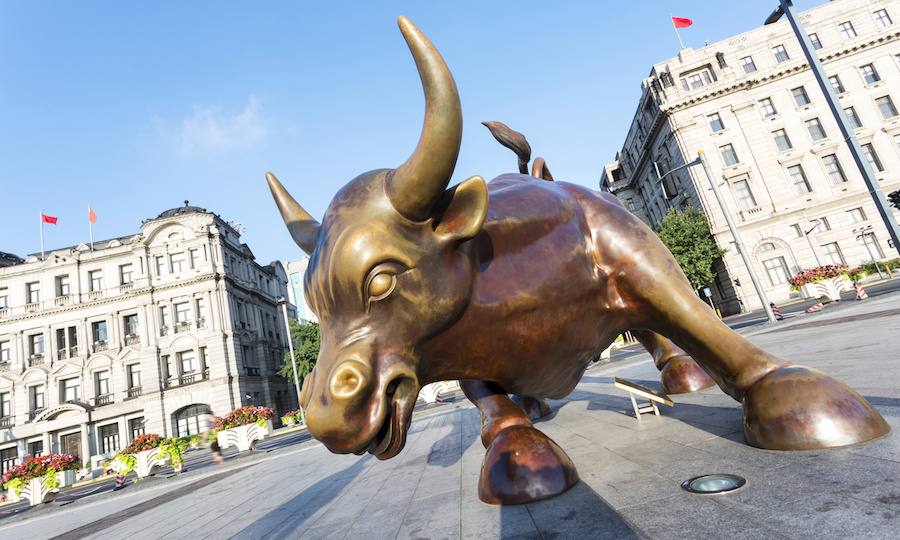
Industrial metal markets are marching higher again, as production outages and shrinking inventories revive worries about global supplies of some of the key building blocks of the economy and the green-energy transition.
Metals from aluminum to zinc surged in 2021 after the pandemic hit production at mines and smelters, wreaked chaos in global logistics networks, and sparked a boom in demand. In both copper and tin, London Metal Exchange inventory levels collapsed in squeezes that drove spot prices to records in wild trading.
Traders are now zeroing in on a fresh wave of threats to supply and signs of shrinking stockpiles. Nickel futures surged to the highest in a decade this week and a jump in the premium for immediately-available metal is raising concerns about a looming supply squeeze. Zinc and aluminum production has been throttled in Europe by an ongoing energy crisis, while metal plants in China are getting caught up in the drive to ensure blue skies for the Winter Olympics.
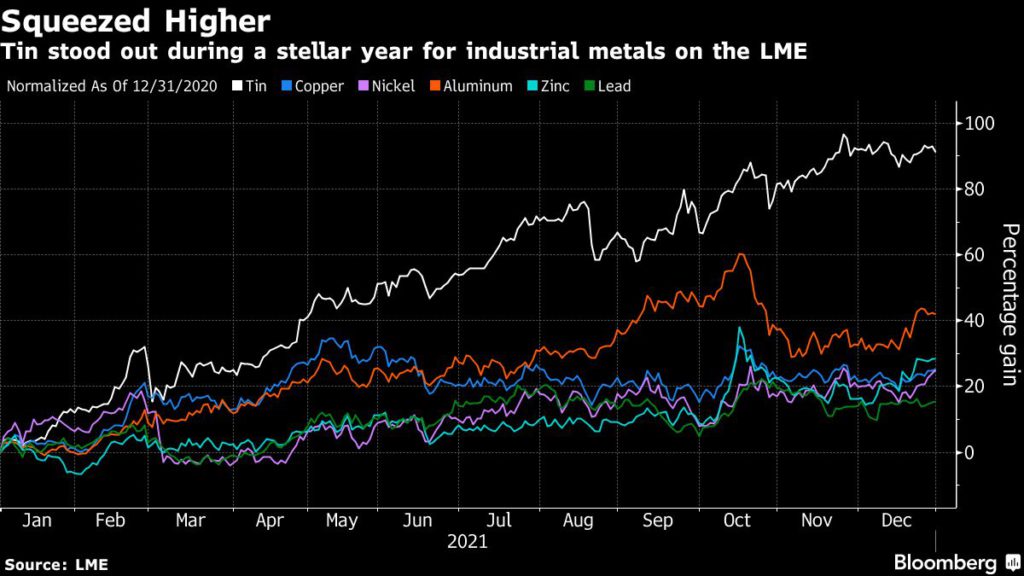
Just about any product, manufacturing process or piece of infrastructure around the world relies on base metals to some degree. Rising prices and shrinking supplies will add to cost inflation for manufacturers and consumers, as well as governments as they roll out infrastructure spending in the wake of the pandemic.
“We are at critical levels of inventory around the world, and prices are starting to move to reflect that,” Jeremy Weir, chief executive officer of trading giant Trafigura Group said at a conference on Wednesday. “We are starting to see consumers wake up and recognize the problems that exist.”
From a collapse in zinc production to a bull run in Chinese nickel, here are some of the big trends that traders and analysts are watching in metals markets:
Nickel squeeze?
After dramatic squeezes in tin and copper last year, dwindling inventories and surging spot prices suggest that nickel could be next in line.
Stockpiles in warehouses tracked by the LME have fallen for 51 straight days — the longest run of declines since 2000 — and the spread between cash and three-month futures prices signals that buyers are scrambling to get hold of the remaining metal.
RELATED ARTICLE: Nickel price storms to 10-year peak on supply worries
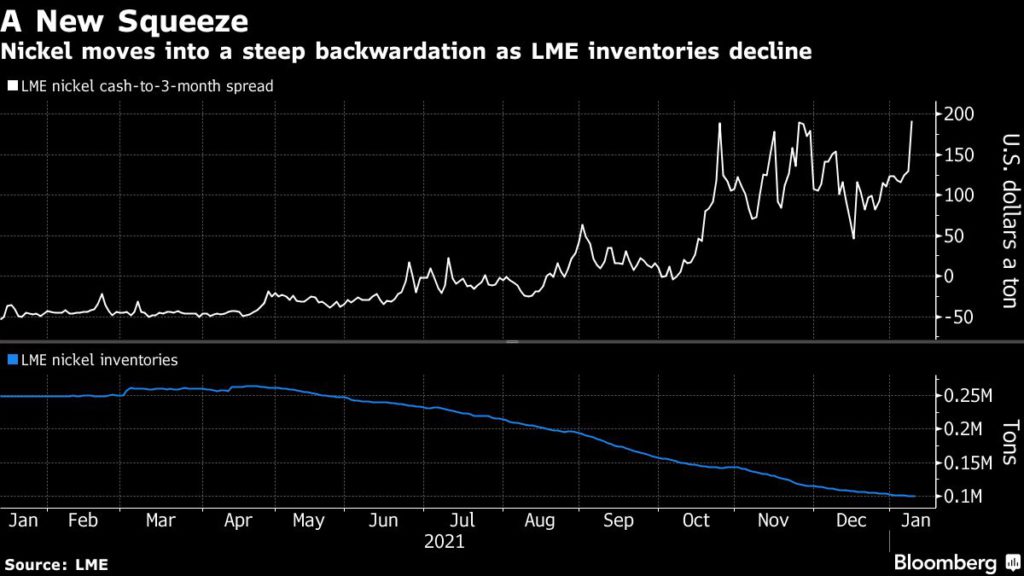
The last time inventories and backwardations were at these levels was in 2019, when top supplier Tsingshan drew down reserves so dramatically that it prompted an investigation by the LME.
This time, supply conditions are also worsening on the Shanghai Futures Exchange, with dwindling inventories creating the risk of a simultaneous squeeze in onshore and international markets. Chinese traders are already piling in, with open interest in Shanghai Futures Exchange nickel contracts more than tripling since lows seen in November, helping to drive prices more than 10% higher over the period. LME nickel prices rose as much as 4.4% to $22,745 a ton on Wednesday, hitting the highest since August 2011.
“The message is: if you’re already long, congratulations,” Oliver Nugent, a metals analyst at Citigroup Inc., said by phone from London. “If you want to go short, I’d commend your bravery.”
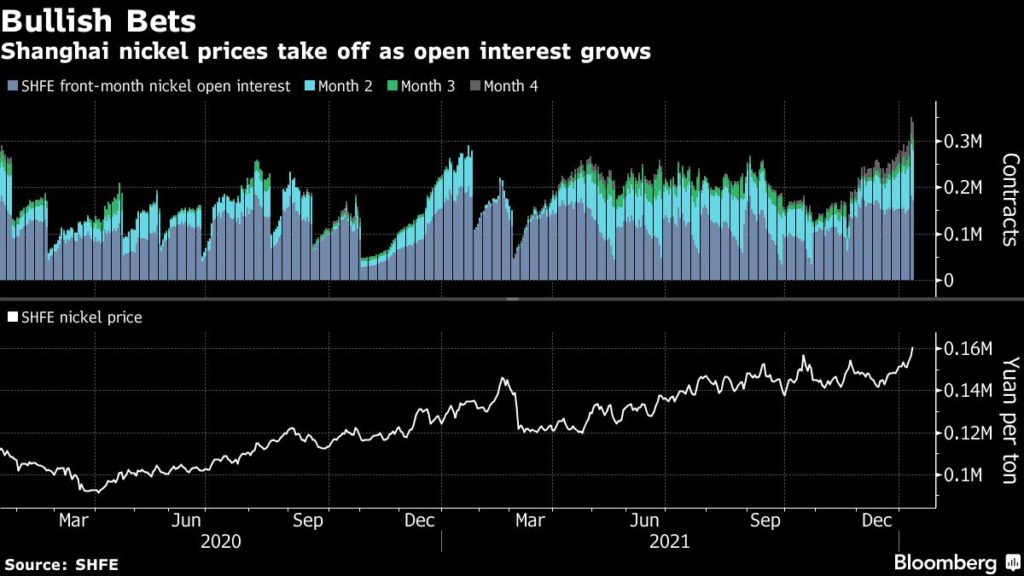
Deepening deficits
In both zinc and aluminum, production has been hit particularly hard by the surge in European energy prices, setting the stage for rapidly deepening deficits.
European LME storage depots are now virtually empty, and buyers are paying increasingly steep premiums over futures to secure spot metal in the region — pointing to a growing shortage.
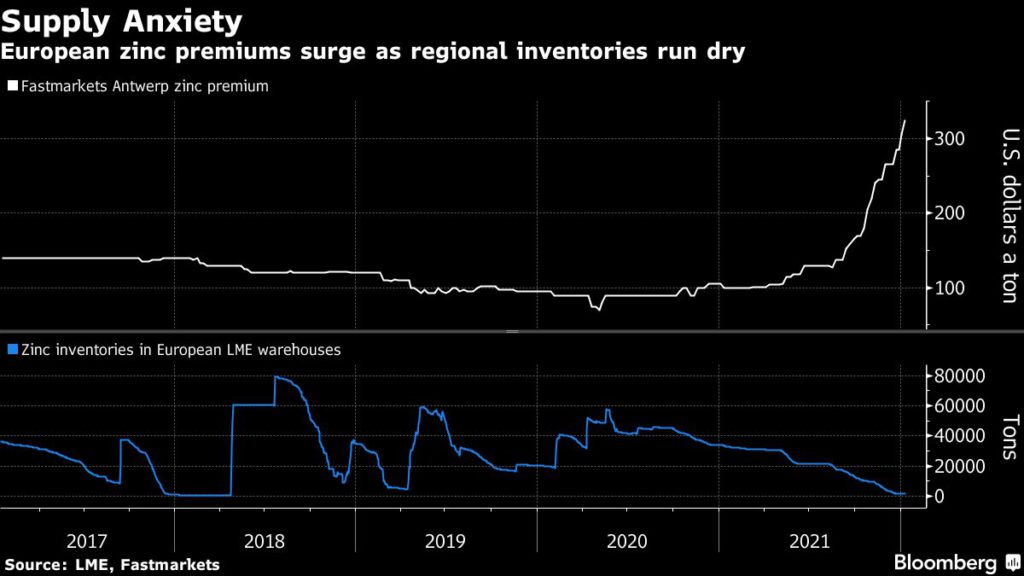
Copper bulls
While the copper market has eased since October’s unprecedented squeeze, bulls argue that the tight supply conditions that helped spark last year’s rally to record highs are far from over. A long-awaited boom in demand in renewables and electric-vehicles will help support prices and any sign that mine production is falling short of expectations could spark further rallies.
Shanghai Futures Exchange copper inventories are near their lowest level since 2009, raising the risk of a squeeze in China’s onshore copper market, similar to that seen in the international market last year. Goldman Sachs Group Inc. sees prices rising to $12,000 a ton within 12 months, up from about $10,000 currently.
“We’re seeing rising challenges to bring that supply into the future, whether it’s falling grades, more remote locations, riskier countries, access to water, or access to people,” BlackRock Inc.’s Evy Hambro said in an interview with Bloomberg TV Wednesday. “During a period where there is a gap between supply and demand and large deficits and low inventories, any destruction is going to play out in some fairly explosive price moves.”
(By Mark Burton)
More News
{{ commodity.name }}
{{ post.title }}
{{ post.date }}



Comments